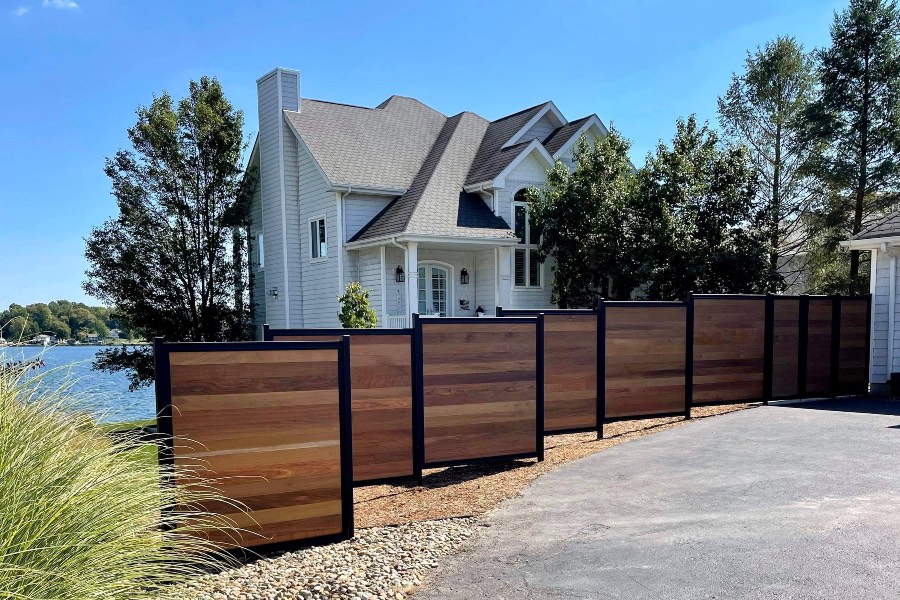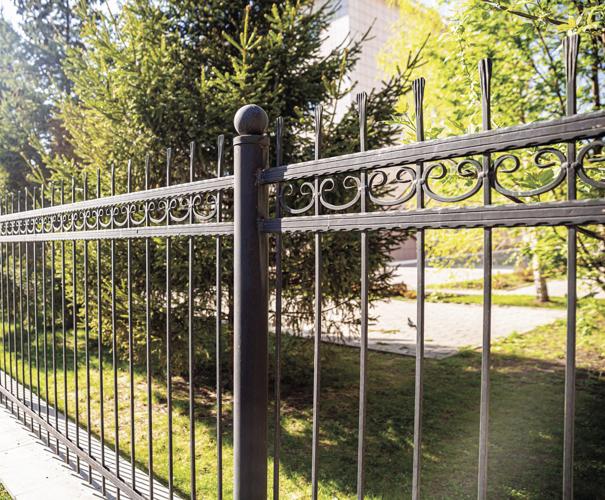All Categories
Featured
Fences play a critical duty in giving personal privacy, security, and boosting the visual allure of your property. Nevertheless, constant exposure to the elements can lead to deterioration. From hefty rain and snow to extreme sunlight and wind, weather-related damages is among the most usual sources of fencing degeneration. While you can not regulate the climate, there are numerous methods to safeguard your fence from the damaging impacts of weather and ensure it lasts for several years to come.
Wooden Fencings: While wood fences are a traditional option, they are very at risk to dampness and parasites. To make a timber fence more resilient, choose for pressure-treated lumber, cedar, or redwood.
Plastic Fences: Plastic fencings are very sturdy and call for little upkeep. They are immune to fading, breaking, and warping, making them suitable for areas that experience severe sun, rain, or winter. Plastic also will not rot or draw in pests, using long-lasting protection without the demand for continuous maintenance.
Steel Fences: Wrought iron and aluminum fences are superb selections for their toughness and resistance to wind and dampness. They are susceptible to rusting over time, particularly if revealed to constant rainfall or moisture. Select powder-coated or galvanized metal fences to lessen the danger of rust.
![]()
Compound Fences: Combining wood fibers and plastic, composite fencings are immune to decaying, fading, and insect damage. They provide the look of timber with less maintenance, making them an excellent choice for areas with variable weather.
![]()
Wood Fencings: An excellent quality wood sealant or discolor is important to shield your fencing from the aspects. Timber sealants block wetness and secure versus mold and mildew and mildew development. They additionally avoid UV damage that can trigger fading and fracturing. Make certain to reapply the finishing every number of years to maintain your surround top problem.
Plastic Fences: While vinyl is low-maintenance, you can still shield it additionally by using a UV protectant. These coatings assist prevent discoloration triggered by prolonged sun direct exposure. Additionally, use vinyl-specific cleaners to keep the surface without spots or dirt buildup.
Steel Fencings: To secure steel fences from rust and rust, think about using a rust-inhibiting guide followed by a protective paint designed for outside usage. Preferably, powder finish offers a sturdy and durable coating that can endure severe climate.
Wood Fences: Tidy your wooden fence with a stress washing machine or a soft fabric and light detergent. Check the fence frequently for indications of rot, fractures, or insect infestations.
Vinyl Fences: Vinyl fencings are simple to tidy with soap and water. For tougher spots, you can make use of a moderate bleach option or a vinyl cleaner to bring back the fencing's look. Do not neglect to evaluate for any kind of splits that might allow water in, resulting in further damages.
Steel Fences: Clean metal fences with a soft towel to remove dirt, dust, and rust. If you discover rust places, remove them instantly with a wire brush and deal with the area with a rust-resistant guide or paint to stop it from spreading out.
Wood Fencings: When installing wooden fence posts, make certain they are established deeply into the ground, preferably below the frost line to stop moving during freezing temperature levels. Usage concrete to safeguard the messages and avoid them from leaning or being uprooted by strong winds.
Steel Fences: For metal fences, make certain that the articles are securely secured in concrete. This is specifically vital in regions with frequent storms or heavy winds. You may additionally want to mount added bracing to supply additional support versus wind anxiety.
Furthermore, excessive wetness from nearby plants can cause mold and rot in wood fences, so maintain plant life at a risk-free range to allow for proper airflow and drainage.
Metal fencings must be examined for rust prior to the wintertime period starts, and any type of affected locations must be treated with rust-resistant products. Furthermore, using a coat of paint or protective finishing before the cool climate embed in can assist shield your fencing from ice and snow damage.
![]()
Conclusion. Securing your fence from weather-related damages calls for a combination of correct material selection, regular maintenance, and proactive treatment. Whether you have a wood, plastic, metal, or composite fencing, the right safety steps can prolong its life-span and preserve its look. By following these basic yet efficient steps, you can guard your fencing against the components and keep it looking wonderful for several years to find.
- Pick Weather-Resistant Materials. One of one of the most efficient ways to shield your fence is by picking the appropriate material for your environment. Certain materials are much more long lasting and much better suited to stand up to particular weather condition conditions.
Wooden Fencings: While wood fences are a traditional option, they are very at risk to dampness and parasites. To make a timber fence more resilient, choose for pressure-treated lumber, cedar, or redwood.
Plastic Fences: Plastic fencings are very sturdy and call for little upkeep. They are immune to fading, breaking, and warping, making them suitable for areas that experience severe sun, rain, or winter. Plastic also will not rot or draw in pests, using long-lasting protection without the demand for continuous maintenance.
Steel Fences: Wrought iron and aluminum fences are superb selections for their toughness and resistance to wind and dampness. They are susceptible to rusting over time, particularly if revealed to constant rainfall or moisture. Select powder-coated or galvanized metal fences to lessen the danger of rust.

Compound Fences: Combining wood fibers and plastic, composite fencings are immune to decaying, fading, and insect damage. They provide the look of timber with less maintenance, making them an excellent choice for areas with variable weather.
- Apply Protective Coatings. No matter the product, applying safety finishes is vital in prolonging the life of your fence. Coatings form an obstacle that guards your fence from wetness, UV rays, and various other ecological stressors.

Wood Fencings: An excellent quality wood sealant or discolor is important to shield your fencing from the aspects. Timber sealants block wetness and secure versus mold and mildew and mildew development. They additionally avoid UV damage that can trigger fading and fracturing. Make certain to reapply the finishing every number of years to maintain your surround top problem.
Plastic Fences: While vinyl is low-maintenance, you can still shield it additionally by using a UV protectant. These coatings assist prevent discoloration triggered by prolonged sun direct exposure. Additionally, use vinyl-specific cleaners to keep the surface without spots or dirt buildup.
Steel Fencings: To secure steel fences from rust and rust, think about using a rust-inhibiting guide followed by a protective paint designed for outside usage. Preferably, powder finish offers a sturdy and durable coating that can endure severe climate.
- Routine Cleansing and Examinations. Appropriate cleansing and normal assessments are vital to maintaining the honesty of your fencing. Accumulation of mold and mildew, debris, and dirt can catch moisture versus your fence and trigger lasting damages.
Wood Fences: Tidy your wooden fence with a stress washing machine or a soft fabric and light detergent. Check the fence frequently for indications of rot, fractures, or insect infestations.
Vinyl Fences: Vinyl fencings are simple to tidy with soap and water. For tougher spots, you can make use of a moderate bleach option or a vinyl cleaner to bring back the fencing's look. Do not neglect to evaluate for any kind of splits that might allow water in, resulting in further damages.
Steel Fences: Clean metal fences with a soft towel to remove dirt, dust, and rust. If you discover rust places, remove them instantly with a wire brush and deal with the area with a rust-resistant guide or paint to stop it from spreading out.
- Strengthen Your Fencing with Appropriate Installation. Proper installment is among one of the most reliable methods to stop weather-related damages. A fence that is inadequately set up is most likely to collapse or suffer damages throughout tornados.
Wood Fencings: When installing wooden fence posts, make certain they are established deeply into the ground, preferably below the frost line to stop moving during freezing temperature levels. Usage concrete to safeguard the messages and avoid them from leaning or being uprooted by strong winds.
Steel Fences: For metal fences, make certain that the articles are securely secured in concrete. This is specifically vital in regions with frequent storms or heavy winds. You may additionally want to mount added bracing to supply additional support versus wind anxiety.
- Trim Trees and Hedges Near Your Fencing. Overgrown trees and shrubs can trigger considerable damage to your fence, specifically throughout high winds or heavy tornados. Tree branches can scuff against the fencing, triggering scratches, and their origins can undercut the messages. Maintain plant life trimmed and ensure that tree branches are not leaning on or near the fencing.
Furthermore, excessive wetness from nearby plants can cause mold and rot in wood fences, so maintain plant life at a risk-free range to allow for proper airflow and drainage.
- Winterize Your Fence. Take extra safety measures to protect your fence from freezing temperatures, snow, and ice if you live in a location with harsh winters. For wood fencings, make certain the base of the articles rises over ground level to avoid water build-up, which can split the timber and ice up. Consider using a dampness obstacle around the base of the articles to maintain them completely dry during the winter season months.
Metal fencings must be examined for rust prior to the wintertime period starts, and any type of affected locations must be treated with rust-resistant products. Furthermore, using a coat of paint or protective finishing before the cool climate embed in can assist shield your fencing from ice and snow damage.
- Post-Storm Repairs. Storms can trigger instant damage to your fencing, consisting of dropped branches, busted messages, or dislodged panels. If your fencing has actually been drastically harmed, it's an excellent concept to consult an expert for repair services to ensure it remains structurally audio.

Conclusion. Securing your fence from weather-related damages calls for a combination of correct material selection, regular maintenance, and proactive treatment. Whether you have a wood, plastic, metal, or composite fencing, the right safety steps can prolong its life-span and preserve its look. By following these basic yet efficient steps, you can guard your fencing against the components and keep it looking wonderful for several years to find.
Latest Posts
Check Out the Top Auto Repair Offers in Montclare, Chicago
Published May 26, 25
1 min read
Uncover Leading Vehicle Maintenance Services offered by Montclare Auto Repair – Expert Care for Your Vehicle
Published May 25, 25
1 min read
Professional Residential Roofing Solutions You Can Depend On
Published May 24, 25
1 min read
More
Latest Posts
Check Out the Top Auto Repair Offers in Montclare, Chicago
Published May 26, 25
1 min read
Uncover Leading Vehicle Maintenance Services offered by Montclare Auto Repair – Expert Care for Your Vehicle
Published May 25, 25
1 min read
Professional Residential Roofing Solutions You Can Depend On
Published May 24, 25
1 min read